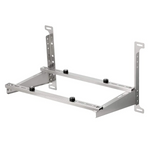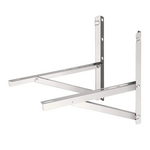In the realm of heating and cooling solutions, PTAC (Packaged Terminal Air Conditioner) units stand out as versatile options for both residential and commercial settings. If you're considering an HVAC system but are unsure about PTACs, this blog post will shed light on what they are, how they differ from window AC units, and when PTACs offer superior economic benefits.
What is a PTAC?
PTAC, or Packaged Terminal Air Conditioner, is a self-contained heating and cooling system that is typically installed through an exterior wall. These units are commonly found in hotel rooms, apartments, and office buildings where individual room climate control is required.

PTAC vs. Window AC: What's the Difference?
In terms of efficiency and components tailored for commercial use, a PTAC stands apart from a window unit. While a window unit hangs externally and features side vents to cool its outside coil, a PTAC has solid sides and is mounted flush to the wall, with only the grill visible from the exterior. Notably, most window units lack heating functionality.
Economic Advantages of PTAC Systems
PTAC units offer significant cost-saving advantages:
- Selective Climate Control: By regulating the climate in specific rooms, PTAC units avoid the need to constantly operate large-scale heating and cooling systems found in commercial settings like hotels or hospitals.
- Versatility in Home Settings: Homeowners frequently install PTAC units in challenging-to-cool areas such as lofts, attics, and sunrooms, benefiting from targeted cooling without the need for additional ductwork connected to the existing HVAC system.

Introducing TOSOT PTAC Systems
Among PTAC options, TOSOT stands out for its exceptional features:
- Four Seasons Climate Control: The 15,000 BTU TOSOT PTAC system efficiently cools and heats up to 850 sq. ft. It also includes a dry function, transforming into a 50-pint dehumidifier on humid days.
- Energy Efficiency: With an Energy Efficiency Ratio (EER) and Coefficient of Performance (COP) rating of up to 13.0, TOSOT PTACs maximize energy savings without compromising performance.
- Environmentally Friendly: TOSOT PTACs use R32 refrigerant, reducing environmental impact and aligning with green initiatives.
- Quiet Operation: Operating at a whisper-quiet 47-49dB in low fan speed and 51-53dB in high fan speed, TOSOT PTAC ensures a peaceful environment conducive to rest and relaxation.
- Durable Design: Coated outdoor coils protect against corrosion, ensuring longevity even in harsh conditions.
Conclusion
For those seeking an efficient, environmentally friendly, and cost-effective heating and cooling solution, TOSOT PTAC systems offer a compelling choice. Whether for commercial spaces or challenging home environments, TOSOT PTACs provide personalized climate control and energy savings, making them a top contender in the world of HVAC solutions.
To learn more about TOSOT PTAC systems and explore their full range of benefits, visit product pages for detailed specifications and purchasing options.
Disclaimer: This blog post is not a substitute for professional HVAC advice. Always consult with a qualified technician for specific installation and maintenance guidance.





